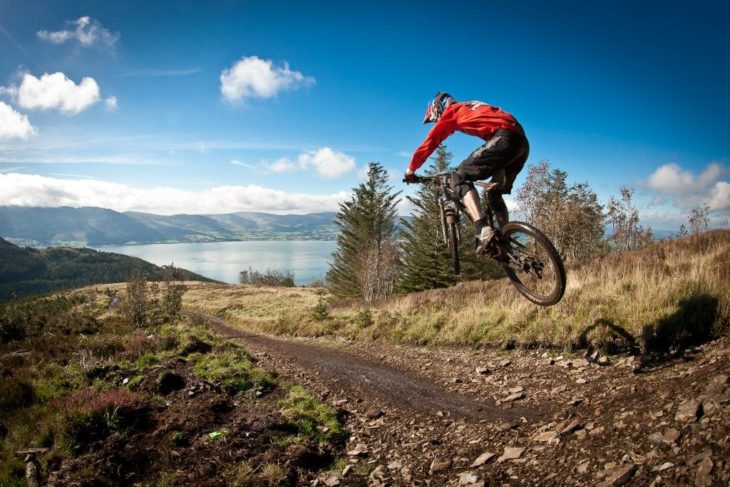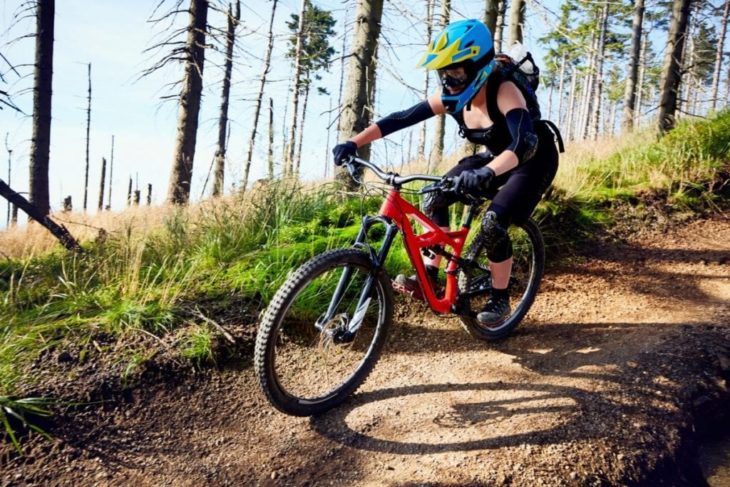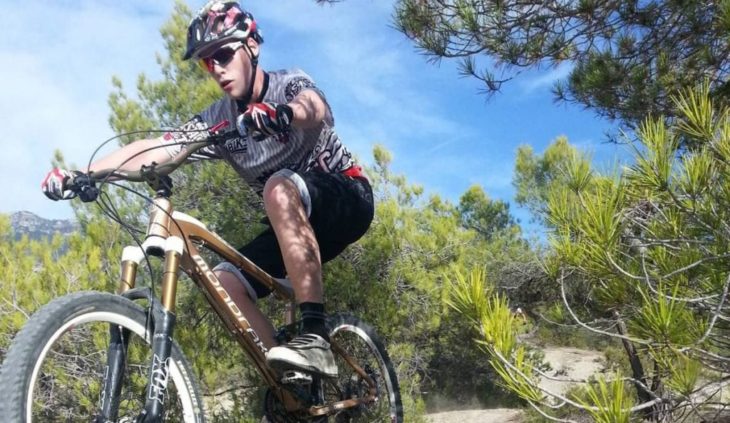So you are planning on buying a mountain bike to get you started on those off-road cycling journeys. But mountain bikes can be expensive, and it’s crucial to buy a bike that will be the perfect fit for you.
Browsing catalogs and bike shops are just one part of the job. You need to understand what the perfect bike measurements are for you specifically. For that, we are going to go through everything you need to know about fitting yourself on a mountain bike like a true professional.

Source: vitalmtb.com
Contents
1. The Most Important – Mountain Bike Frame Size
Choosing the mountain bike frame size is the first and most important step. You can use a sizing chart, usually, all bike shops have those, to get a feel of where exactly you fit. If you’re thinking between two different sizes, a smaller one should be your first choice because you won’t feel uncomfortable, and the reach won’t feel too long. Although we should mention that your reach will increase as you get used to your new bike. It’s important to be able to place your full feet on the ground when not cycling, this should be the ideal measurement. Another crucial thing to consider is having the right seat tube length. There is an equation to finding the perfect top tube seat length which goes in a way that you take your inseam measurements and multiply it by 0.67 after that subtract 4 inches (everything is measured in inches in our equation). After making this calculation, you will find the perfect seat tube length for your height.
2. Handlebars and Width
When choosing the right handlebar and width, this best mountain bike under $300 review and buying guide explain’s that handlebars width depends on your body type and riding style. But, most bike shops will recommend and will offer you a wider rather than narrower handlebar. This is because a wider bar encourages you to breathe more while riding due to your chest opening more while riding rougher terrain. And in general, a wider handlebar is recommended for tougher terrain. You should also take into consideration that your wrists should be placed no more than in a 15-degree angle, anything more can cause major wrist strains while riding.

Source: kinstacdn.com
3. Stem Length
The stem length is crucial for every rider, but a good stem length is mostly recommended for people with disproportionate legs to torso size. A longer stem will pull you forward and put too much pressure on your wrists, it will flatten your back, and the result is harder steering. A shorter stem length will add more stability, make steering easier, relieve your back, and relieve your wrists.
4. Seat Post Height
Even the pros get this one sometimes wrong, as it can be a tricky one. It’s crucial to have the ideal seat post (saddle) height, as anything but the perfect can lead to discomfort and sometimes injury. Below we will give you the steps necessary to have the perfect saddle height and avoid any potential injuries. Caution: you might need someone to assist you with this.
- Sit on the bike
- In line with the saddle, drop one of the pedals to its lowest point
- Place your heel on the pedal axle
- Place your leg in a completely straight position
- Make sure to have a straight line between the kneecap to the ball of the foot

Source: imagenii.com
If everything is in motion, and everything is in a straight line, then your saddle is at the preferred height.
